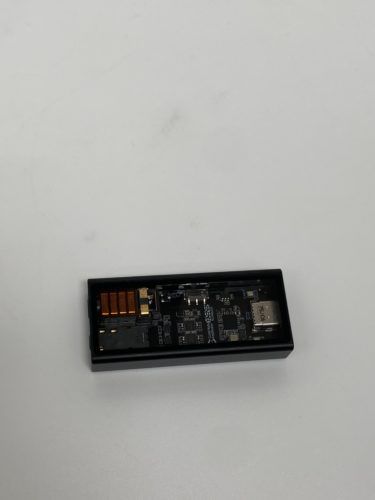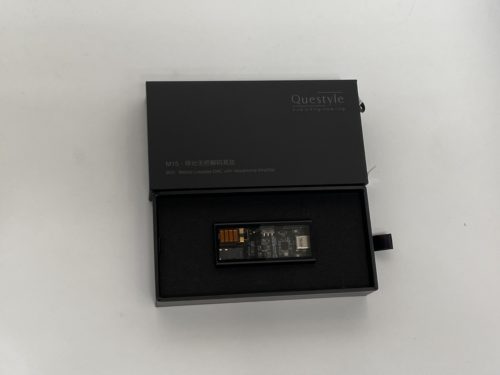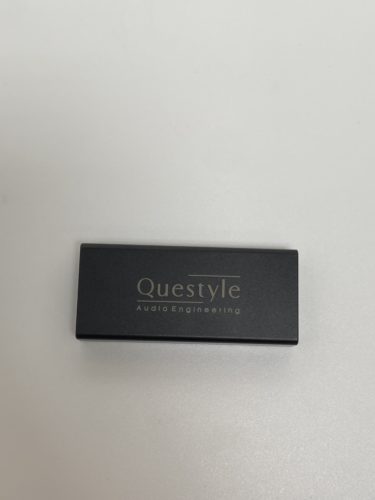After the acclaim of their M12 Portable DAC, Questyle has returned with its follow-up, the M15. The M15 is a portable DAC that’s meant to improve upon the original design of the M12 in every way. At $250, the M15 falls into a fairly standard range for portable DACs and is heavily contested. I’m going to see what sets it apart from the other portable DACs on the market.

What’s in the Box
- Questyle M15 Portable DAC
- USB-A to USB Type-C cable,
- USB Type-C to Type-C cable
- Instruction manual
- Guarantee card

Look and Feel
The design of the M15 reaches an intersection between complexity and simplicity. The M15 is incredibly lightweight and small, making it incredibly easy to transport and use on the go. The design is sleek and simple, with only 2 output ports (4.4mm and 3.5mm), a USB-C input, and a switch between high and low gain mode. What sets the M15 apart is the glass panel that reveals the circuitry of the device, showing its complexity while still retaining its clean look. The 2 indicator lights show whether or not the DAC is currently sending lossless audio, and another to indicate which gain setting you’re currently using.
Design
The M15 contains two of Questyle’s patented CMA (Current Mode Amplification) SiP modules, for a total of four CMA amp engines. This quadruple drive amp circuit gives the M15 strong output that can power even the most resistant of headphones. That being said, it draws surprisingly little power, and it didn’t have a noticeable effect on my phone’s battery life when I used it to power the M15. The High and Low gain modes make it so you can power both sensitive and demanding equipment with equal tonal neutrality, though I would prefer a separate volume control, though not essential.
The Questyle M15 has a frequency response of 20 Hz – 20 kHz

Soundstage
The soundstage on the M15 takes a very non-interventional approach. The difference between a standard headphone port and the M15 is that the M15 sounds less crowded when used on mixes. The difference is subtle, but incredibly important if you want your stereo field to be accurately represented rather than altered by other dongles.
Frequency Response
The M15’s true neutrality is remarkably present throughout the frequency range (or absent, depending on how you want to think about it). The DAC doesn’t lean in any direction and does little to color the original mix, which is incredibly impressive. Many other portable DACs have a very digital quality to them, but the M15 manages to remain accurate, clear, and surgical without giving the mix that artificial sheen that so many others impose. The two gain modes (high, low) don’t differ in tone quality. That being said, you have to be aware of your equipment’s sensitivity, as it does reach some mild distortion if not used properly. Overall, I was very impressed with the M15’s ability to recreate the frequencies regardless of volume.

Overall
The Questyle M15 opened up a new level of precise listening for me. It’s incredibly simple to use, compatible with nearly every file format and sounds incredible. Many people think that portable DACs are an optional expenditure. I can assure you that the difference in audio quality is noticeable. Now I’m not sure if I’m going to be able to go back to listening without one. If you’re looking for a DAC that will assure pristine lossless audio listening without any other hassle, then I would highly recommend Questyle M15.
|
Pros |
Cons |
|
|
You can buy the Questyle M15 at Audio46
Compare the ranking of various headphones, earbuds and in-ear monitors using our tools.
Discuss this, and much more, over on our forum.
---MAJORHIFI may receive commissions from retail offers.















